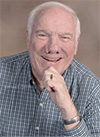 Illustration by Corey Lewis.
Illustration by Corey Lewis.
During these busy times, you are excited to focus on being involved in the cattle and crop action – you’re a doer. I understand and support your desire to be a doer. To do what you love, but I have important news for you: You must maintain leadership as your top priority, even in busy times. That defines our topic for the month: What are your leadership responsibilities in busy times? Let’s focus on three.
Organization
When you stop doing, you lose one person – yourself. When you stop organizing, you lose the work or reduce the efficiency of everyone.
Let me share a personal example. A few years ago, I volunteered to help set up on the morning of a big community event in the little city where I live. I arrived a little early and helped the organizer with a couple of tasks. He then left to get some needed supplies.
Momentarily, the other volunteers arrived, and we stood around chatting. Soon everyone was complaining and very frustrated. We volunteered to help, but we each had better things to do than stand around waiting for directions. We finally completed the setup, but I do not think anyone left with a sense of accomplishment.
Your employees are excited for these times when they can focus on getting things done. They are often willing to work extra hours as needed to complete the urgent tasks. Like the volunteers, they also have other things they could be doing – family, children’s sports, fishing, golf, etc.
To maintain their initial level of excitement, they will require a sense of continuing accomplishment, not frustration from unclear plans, expectations or directions.
Before you join in the work, make certain you are thinking several steps ahead, making plans for those next steps and communicating those plans to everyone. Just as you have systems for your crop and cattle work, you need a system for organizing your workforce.
The system should include the combination of short operational meetings and verbal or text communications that best fit your beef production business. If everyone starts at the same time in a central location, a short morning meeting will save time in the end.
When a short daily operational meeting is not feasible, I recommend a weekly meeting, perhaps Monday morning, followed by daily updates at a set time – late in the day or first thing in the morning. A standard time enables others to know what to expect.
In all cases, there will be many updates as you call audibles to the plans you have laid out. These also require clear and frequent communication.
Returning to my volunteer experience. The next year, I volunteered to be the on-site coordinator for the setup. I met with the organizer the day before to understand what needed to be done. Although fewer volunteers showed up (I wonder why?), the setup was completed in about half the time. As far as I could tell, each volunteer went home with a feeling of accomplishment.
Remember: Your first priority, as the leader, must be thinking and planning two or three steps ahead of what is being done right now.
Clarity
As you communicate plans and expectations, clarity is paramount. During busy periods, everyone is in a hurry, often stressed and sometimes exhausted. Each of these increases the likelihood of a communication failure, that what you said is not remembered completely or correctly.
Here are a couple of ideas to ensure clarity of communications:
- Whenever possible, especially when the communication includes numbers or directions, have the details written down so you can leave a copy for later reference. When employees are unsure about details, they are much more comfortable looking at the reference than calling you.
- When communicating verbally, ask employees to take notes. Not only does taking notes provide a reference, but it also greatly increases retention. Everyone should always have access to a place to take notes; it can be a mobile device or simply a small notebook.
- When communicating specifics (directions, quantities, locations, etc.), the less you rely on memory, the fewer the problems.
- As always with clarity, explaining why increases both acceptance and retention.
Taking a little extra time to be clear will reduce mistakes, lessen frustration and save time.
Perceptiveness and empathy
As the leader, you need to continually take the emotional “temperature” of your dedicated workforce. Some employees will work harder and longer than is good for their emotional and/or physical health.
Here are some ideas and things to look for:
- Look for telltale signs that emotional stress is growing: easily frustrated, quick to get angry, reduced enthusiasm, anything that is out of character. When these signs appear, the person needs a pick-me-up: a break, a task change, encouragement.
- Look for the telltale signs of physical stress: any of the above emotional signs, increased frequency of errors, moving more slowly, resistance to directions, lethargy. You need to move quickly to ensure this person gets some rest. At this point, the person is an accident waiting to happen.
- Make certain people have sufficient short breaks. Machines need refueling and routine maintenance; people need breaks to refresh and replenish. The research is clear: After three to four hours at a repetitive task, productivity has declined such that adding a break will result in more total work than continuing with the task.
- Encouragement and feedback are just as important in busy times. The format will be quick and informal.
The good news is: The above responsibilities should not require all your time. They must, however, be your first priority.
Bob Milligan is also professor emeritus, Dyson School of Applied Economics and Management, Cornell University.









